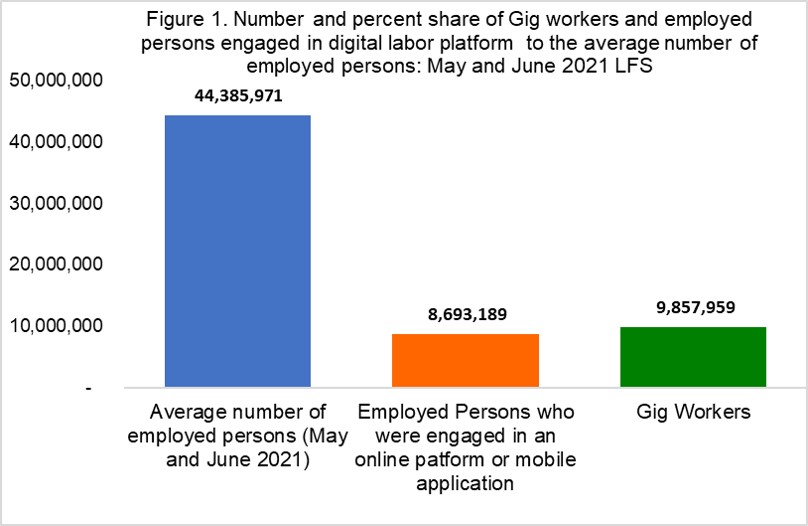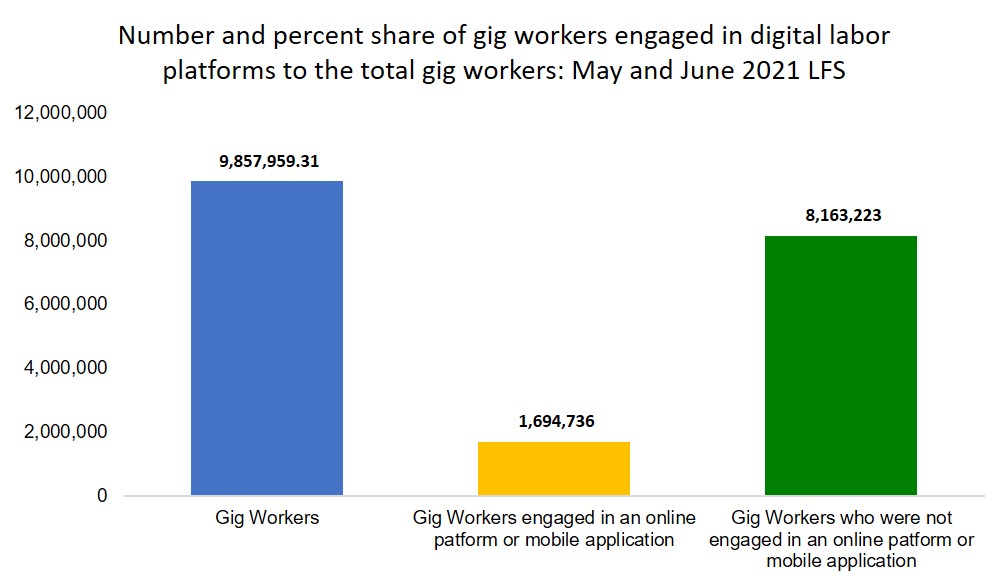Initiatives to Measure the Size of Gig Workers and Online-related Occupations in the Philippines Using the Labor Force Survey
Abstract
In recent years, “gig workers” and online-related occupations began to grow due to the recent growth of technology-based businesses and the availability of freelance and part-time work. They also emerged during the onset of the COVID-19 pandemic because of the flexibility of work arrangements. The workers who lost their full-time jobs began undertaking temporary or freelance jobs to sustain or afford their needs.
As the economy starts to embrace the new normal for workplaces, information about the nature and magnitude of gig work characterized by short-term employment and workers for different employers on a day-to-day or week-to-week basis is becoming vital for labor market policy and regulatory purposes.
However, while there were concerted efforts from policymakers and researchers to provide information on the nature of the gig economy, to our knowledge, conceptual or operational definitions and identification of occupational classification of gig workers vary across countries. Hence, the countrywide estimation of the size of the gig workers was incomparable.
In response to the call for relevant statistical information on the size of gig workers in the Philippines, we developed criteria for gig workers based on the nature of employment available in the Labor Force Survey (LFS). With the notion that gig workers were most likely engaged in digital labor platforms, we also supplemented questions related to the online-related occupations in the May and June 2021 rounds of the LFS to capture the gig workers engaged in digital labor platforms.
The average results of the May and June 2021 rounds of the LFS showed that 20 percent (8.7 million employed persons) of the 44.4 million employed labor force were engaged in an online platform and mobile application in the Philippines. Meanwhile, out of the total employed persons on average, 22 percent (9.9 million employed persons) were gig workers or workers in short-term/seasonal or worked for different employers on a day-to-day or week-to-week basis. Notably, of the total 9.9 million gig workers, 68 percent (6.7 million persons) were employed in private establishments, 22 percent (2.1 million) were self-employed, 6 percent (584 thousand persons) worked for private households, and 5 percent (463 thousand persons) worked for the government. In terms of engagement in digital labor platforms, of the total 9.9 million gig workers, 17 percent (1.7 million gig workers) were engaged in online platforms or mobile applications in their work. However, it is to be noted that the share of gig workers engaged in digital labor platforms in their work to the total employed persons was lower with four (4) percent share of the total employed persons in the Philippines.
This paper defined the scope and coverage of the universe under study and developed criteria to measure the size of gig workers and gig workers engaged in digital labor platforms. Furthermore, we investigated the nature of gig workers in the Philippines by looking at their demographic and socio-economic characteristics.
Keywords: Gig workers, online-related occupations, digital labor platforms, short-term employment
Figures/Tables
Figure 1 Number and Percent share of Gig Workers

Figure 2 Number of Gig Workers Engaged in Digital Labor PLatform

